#voice mails
Explore tagged Tumblr posts
Text
youtube
Oh wow. These are so cool. I didn’t know they did this.
So these are like the communications between them between episodes. About that episode’s events but in their perspectives and how it affects them. Great idea!
I always wondered just how long that period of estrangement was between them when Nicole got exposed for opening Waverly’s DNA test and not telling her that she had it all along. Like between the spa date with Rosita and that whole thing with Tucker and his “siblings”, how long did they go with not speaking to each other? Or rather Waverly not responding to Nicole’s attempts to talk. Very interesting how they used the calendar to show this.
I love how easily Dom and Kat slip into their characters even when they’re not professionally being filmed. It was obviously a thing they thought of to do for fans.
A very creative idea to show what happens between them behind the scenes of the show. Love it! 👍👏❤️
Also did it even come up in the show that Wyatt Earp founded Black Badge with President Roosevelt or did they just make that up for these case files? Because if so, that’s fucking genius! Because Black Badge is supposed to be “government operated”, right? So of course, the leader of law enforcement of Purgatory at that time would have something to do with BBD. And so would the President if it was really that prestigious. And they’re supposed to be slowly unravelling that Wyatt really wasn’t the hero everyone thought he was. So adding this into the plot continuity is very clever!
It’s like I said before. Sometimes the writing for the plot is so fucking spot on that it’s barely missing anything. And then other times it’s such a fucking mess that there’s plot holes all over the place. And these two are like… “We’ll fix this shit ourselves.”
Plot continuity. Narrative continuity. Massive deal.
👏👏👏
#purgatory case files#wayhaught#domkat#waverly earp#dom pc#nicole haught#katherine barrell#behind the scenes#facetime#voice mails#messages#this is the kind of cool stuff you can do on modern day shows that have updated technology#use smart phones#don’t act like they don’t exist#this is how you do continuity when the show’s are so short#fucking use the tools you’re given to do something creative#I love actors like this that just really get their characters and the show and have creative freedom#and just have fun#I miss it#I fucking miss it like crazy#show creating looks so fucking miserable now#the cast and crew are not having a good time#it’s so obvious
14 notes
·
View notes
Text

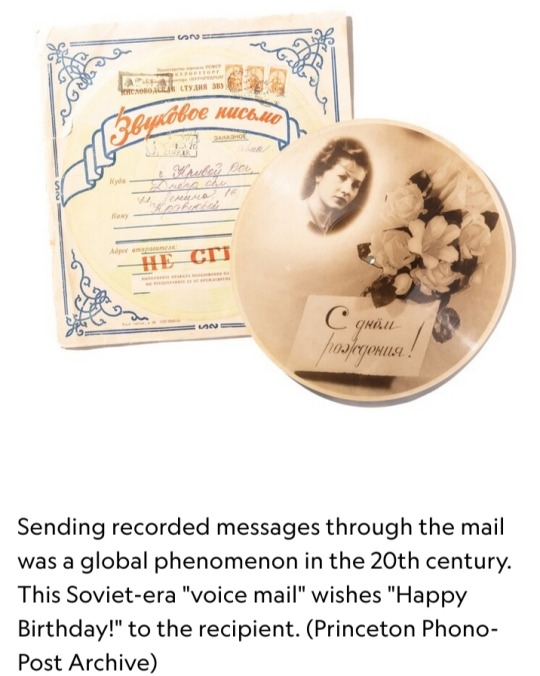
“Hello Mother, Dad, and Blanche,” a quiet voice says above the cracks and pops of an old vinyl record, which has clearly been played many times over.
“How’s everything at home? I’m recording this from Dallas…from this very little place where there are pinball machines and many other things like that…”
The disc is small, seven inches across, dated October 1954.
The faded green label shows that the speaker’s name is “Gene,” the recording addressed to “Folks.”
Gene suggests in his minute-long message that he is traveling — “seeing America” — and tells his family not to worry about him.
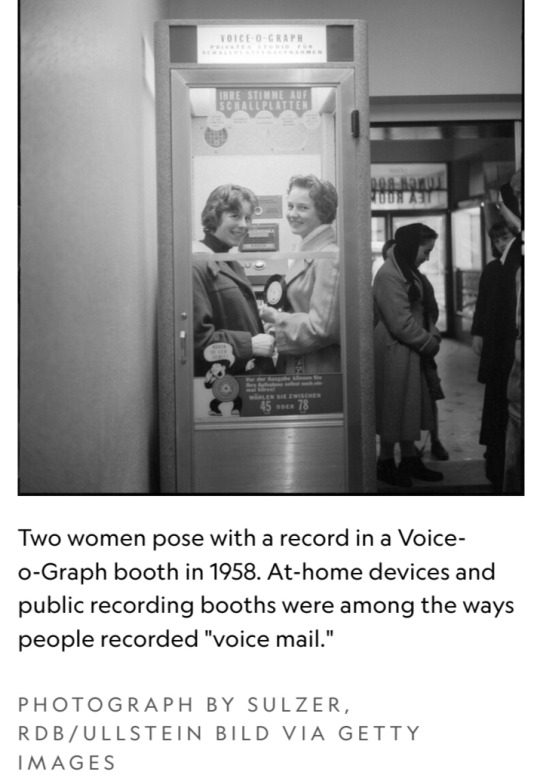
“I should complete my trip sometime around Thanksgiving,” he continues in a second recording made in Hot Springs, Texas, not too long after his first one.
“I hope you received my letter and I, in turn, hope to receive some of the letters that you sent me. It’s been a very long time since we’ve corresponded, and I’m looking forward to hearing from you very, very much.”
This largely forgotten sound is one of the world’s early “voice mails.”
During the first half of the 20th century, these audio letters and other messages were recorded largely in booths, pressed onto metal discs and vinyl records, and mailed in places all over the world.
Best known today for playing music at home, record players were then being used as a means of communication over long distances.
Reach out and touch someone
The idea of transporting a person’s voice had loomed large in the human imagination for some three centuries before it was finally achieved with the invention of the phonograph in the late 19th century.
Historical documents from the Qing Dynasty in 16th-century China suggest the existence of a mysterious device called the “thousand-mile speaker,” a wooden cylinder that could be spoken into and sealed, such that the recipient could still hear the reverberations when opening it back up.
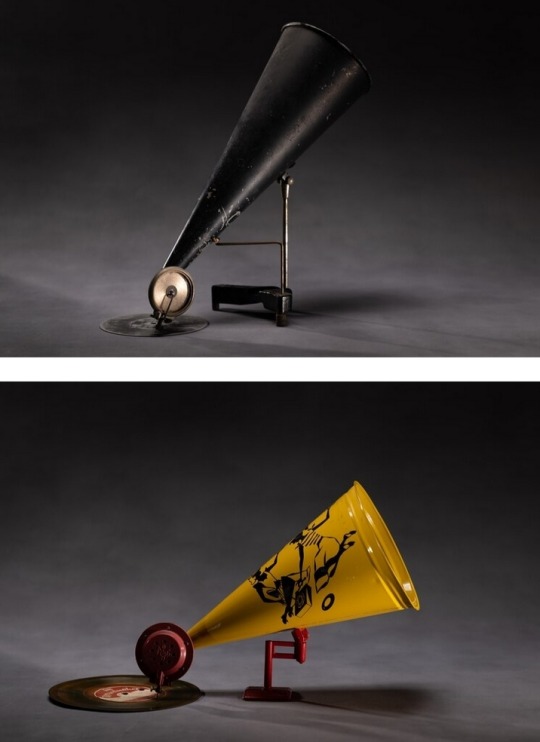
Top: A Kodisk horn and recording stylus attachment in the Princeton Phono-Post Archive was used in the early 1920s for home recordings on pre-grooved blank metal discs using a normal gramophone.
Bottom: A Gem Recordmaker attachment at the Princeton Phono-Post Archive was used in the 1950s for children to "make your own permanent records" on blank six-inch discs using their own gramophone at home.
When Thomas Edison invented the phonograph in 1877, he envisioned a device that could reproduce music and even preserve languages.
He saw, in its earliest uses, the potential to transform business, education, and timekeeping.
He even imagined a so-called “Family Record” — a “registry of sayings, reminiscences, etc., by members of a family in their own voices and of the last words of dying persons.”
But correspondence was at the top of his mind: Edison thought his invention could be used for dictation and letter writing.
In the late 19th century, handwritten letters were the most common form of everyday personal communication.
The telegram, which later became popular in the early 1900s, was used for shorter, urgent messages.
While Alexander Graham Bell made the first transcontinental telephone call from New York to San Francisco in 1915, long-distance calling remained expensive and inaccessible to most ordinary people until the 1950s.
Voice-O-Graph
The gramophone, a later form of the phonograph developed by Emile Berliner in 1887, provided a first possibility for recorded sound being used for long distance communication.
It made recording and playback possible on discs, which were easier to store, reproduce, and send.
The earliest known record to have been put in the mail as a means of correspondence would be sent in the early 1920s, but the practice of sending voice mail really got going across the world in the 1930s and 1940s.
It was personal and affordable as long as customers could find a recording booth or home device.
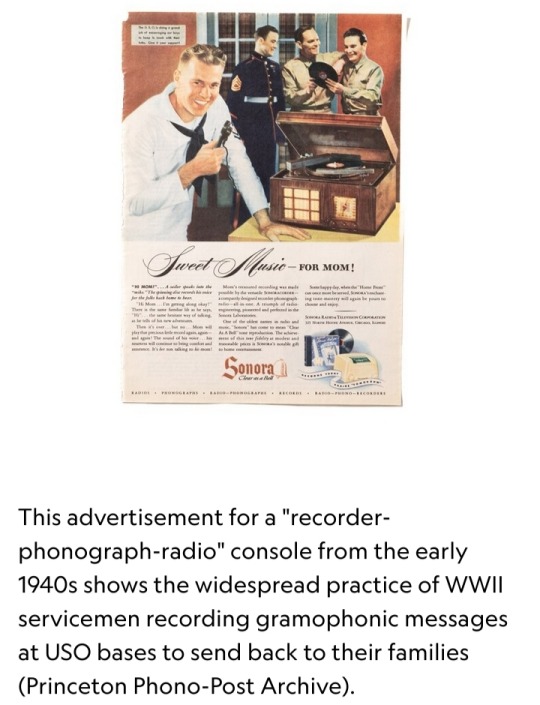
In the early 1940s, the American company Mutoscope rolled out the Voice-O-Graph machine, which vastly popularized voice mail in the United States.
It was a tall wooden cabinet, shaped not unlike a modern-day photo booth, that declared, on one side: RECORD YOUR OWN VOICE!
Invented by Alexander Lissiansky, these recording booths were marketed as novelties and set up at common gathering places: amusement parks, boardwalks, tourist attractions, transportation hubs, military bases and U.S.O. events.
There was a Voice-O-Graph machine at the top of the Empire State Building, on the piers of San Francisco, and by the Mississippi River in New Orleans.
The speaker entered the Voice-O-Graph, inserted a couple of coins, and had a few minutes to record a message.
Then, out popped a record the size of a 45-rpm single that was not only durable enough to be played multiple times, but also flimsy and lightweight enough to send in the mail for little more than the cost of a regular letter.
Oftentimes, the envelopes themselves would come included.
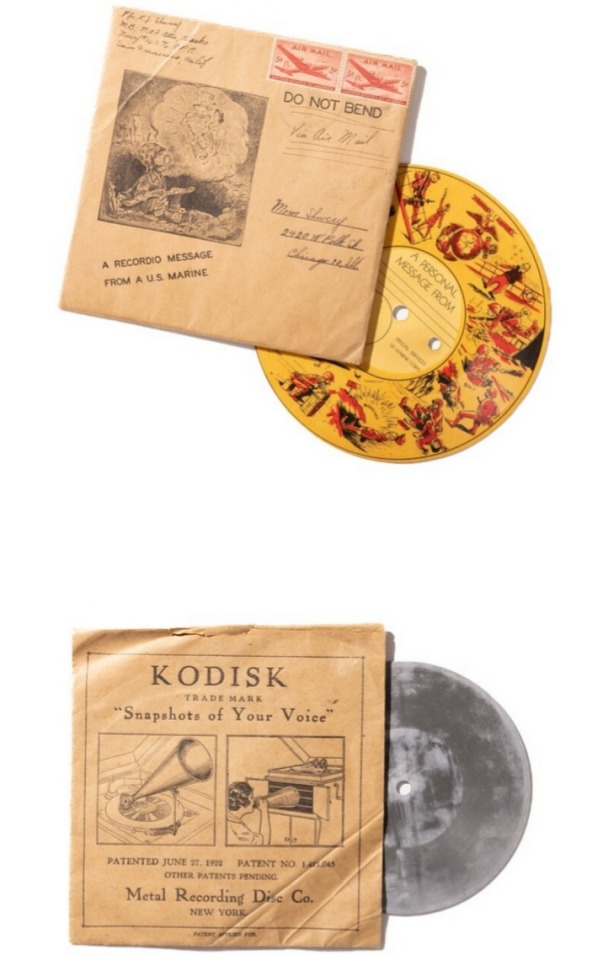
Top: A soldier sends a Christmas greeting to his mother in Chicago.
The envelope, which came with the record, depicts a soldier anxiously imagining his wife with another man in his absence (Princeton Phono-Post Archive).
Bottom: Pre-grooved metal discs were used for domestic gramophone recordings in the early 1920s.
The paper sleeve illustrates the two methods of recording: one, depicted on the right, involved using a megaphone to shout into the phonograph's horn; the other method, depicted on the left, involved using a Kodisk-branded external horn and recording stylus, which would be attached to one's home gramophone and is shown in another image above (Princeton Phono-Post Archive).

Top: A “Recordio” home-recording demonstration disc from the 1940s illustrating five different models of radio-recording-playback consoles made by the Wilcox-Gay Corporation, ranging from massive living-room consoles to portable “airplane type” suitcase versions (Princeton Phono-Post Archive).
Bottom: Wilcox-Gay Recordio demonstration picture disc featuring the violinist and radio star David Rubinoff (1897-1986) and his $100,000 Stradivarius making a recording at home (Princeton Phono-Post Archive).
Photographs by Rebecca Hale, NGM Staff
Words of love
The messages people sent would range in emotion — from excitement to nervousness, joy to embarrassment.
Travelers would make recordings to update family and friends on long trips.
Especially during World War II, where there were recording booths on military bases in nearly every theater of the conflict, soldiers used voice mail to reassure loved ones with the sound of their voice, even if some them would never return home.
There are countless “voice mail valentines,” surprisingly intimate audio love letters.
Many of the messages, sent from far away, express longing.
“You keep your chin up,” a voice named Leland tells his wife in a recording dated 1945, from a booth in New York City.
“All of you keep those chins up. Mike, all of us will all be home, be home where we can pick up, and carry on as we did before.”
In one recording made in Argentina in the 1940s, a man plays the violin before he recites a lullaby.
“Sleep, sleep my darling girl,” the man says. “It’s getting late.”
Phono-Post archive
Back then, families could listen to the messages on repeat — gathering together around the record player whenever one arrived.
They could play it proudly again anytime there were guests, but with each play, the needle would scrape away at the delicate grooves until the message could hardly be heard any longer.

Today at Princeton University, professor and media theorist Thomas Levin is dedicated to preserving these sounds of the past.
He maintains the world’s only archive dedicated to what he calls the “Phono-Post.”
At the height of the phenomenon, there were perhaps thousands of Voice-O-Graph machines in America and many more recording stations across the world.
“Millions of these audio letters were sent across the United States, South America, in Europe, in Russia, in China,” Levin says.
Levin’s office is crammed with many of the items he has collected over the years, including books, posters, and other ephemera—as well as, of course, the records themselves.
Levin has already digitized some 3,000 of the discs, all of which are tucked into clear plastic sleeves and carefully catalogued.
He keeps them filed into cabinets and stackable storage bins in a temperature-controlled room.
Thousands more records lie waiting to be processed in a nearly seven-year backlog that keeps growing as Levin continues collecting.
He employs AI bots that constantly comb through eBay pages and bid for items on his behalf.
Sometimes, he will come across people selling, knowingly or unknowingly, the voice of a relative.
“I write to them and I say, you’re selling the voice of your grandfather?’” Levin says.
“There’s not a sense of the value of the voice, such that people are willing to part with these objects.”
Still, he offers to share an MP3 file of the recording with them, and for that, they are often very grateful.
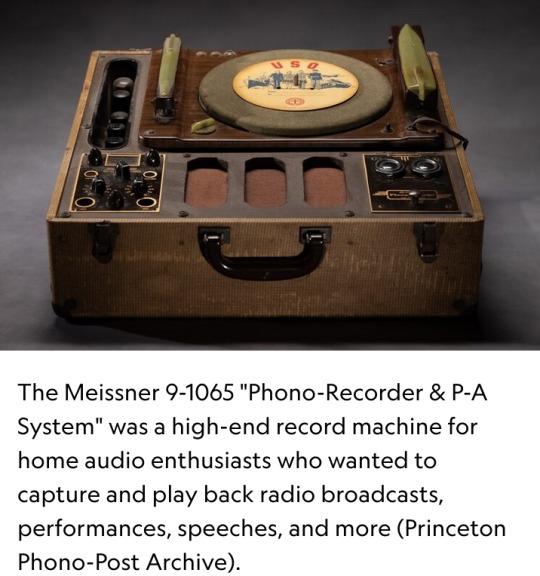
Voices of the Past
For the most part, there aren’t many celebrity voices stashed away in the Princeton Phono-Post Archive.
“The bulk of the recordings in this archive are of very unextraordinary people articulating desires, wishes, fantasies, of a very quotidian sort,” Levin says.
They are enormously telling, if one is willing to listen closely.
Much like paper letters, these audio missives can also reveal insights about particular moments in history through the accounts of individual lives lived within them, but with added layers of sensory detail.
Historical linguists are particularly interested in “voice mail” because it provides some of the earliest-ever recorded samples of how regular people spoke — their conversational vocabulary, their pronunciation and accents, their sentence structure, their intonation.
“There’s no editing. There’s no cleaning up,” Levin says. “Once the recording starts, it will run until it ends, whether you have something to say or not.”
He smiled. “If you don’t have anything to say, that says something too.”
The advent of cassette tapes in the 1960s meant that services like the Voice-O-Graph quickly fell out of fashion.
(For a few decades, people were sending long distance messages on audiocassettes, too — a practice that became particularly common for U.S. soldiers deployed in the Vietnam War.)
But this voice mail phenomenon, while short-lived, holds a significant place in the history of global communication.
“What we’re recovering now are the remnants of a chapter of media history, a cultural practice, that was huge, ubiquitous,” Levin says, “but has now been forgotten.”
For many people, these recordings were the first time they had ever recorded their own voice.
They sound nervous, even awkward, while others even sound like they are reading from a piece of paper.
Some, when faced with their very first self-recording, confronted the realization that they were leaving a highly personal trace that would likely outlive them.
“People strangely, but with remarkable regularity, talk about death,” Levin says.
“They’re writing to a future.” He pauses. “And one thing is known about that future: that they will not be a part of it.”
#voice mails#audio letters#old vinyl record#record players#phonograph#Thomas Edison#telegram#handwritten letters#Alexander Graham Bell#gramophone#Emile Berliner#Mutoscope#Voice-O-Graph#Alexander Lissiansky#Phono-Post#Princeton Phono-Post Archive#Historical linguists#cassette tapes#National Geographic
31 notes
·
View notes
Text
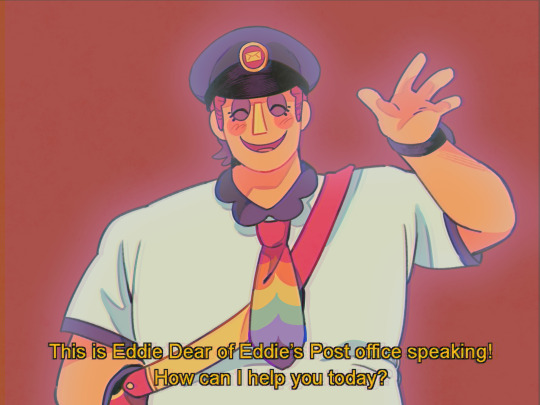

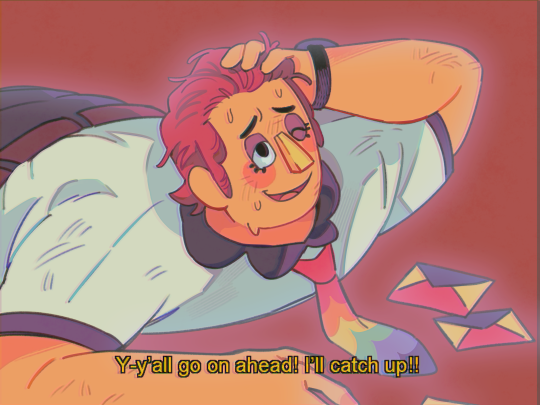
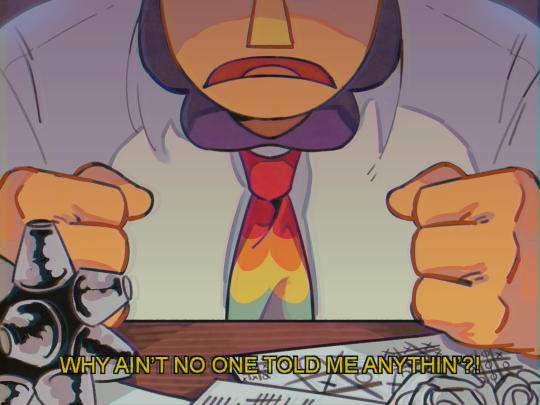
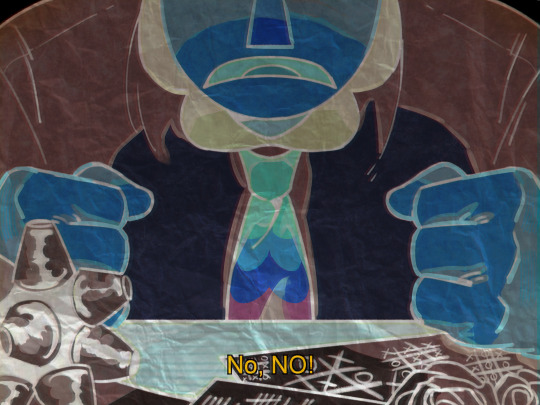
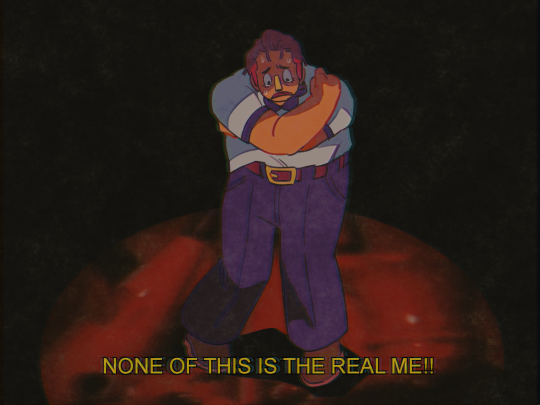
I'M NOT YOUR DOLL AND I'LL THINK FOR MYSELF AND I'LL LIVE FOR MYSELF
#welcome home#welcome home puppet show#eddie dear#senjart#so#so. SO!#SO ABOUT TODAY'S UPDATE. WELL.#WELLLLLL!#eddie is happy. eddie is happy!#so excited for eddie's lobotomy arc#I have many MANY thoughts about today's update. by far the best one I should say#so much implications of the situation the puppets are in#how sally is so.... harsh towards eddie#and we got shown him having an outburst when hes left alone and doesnt know what to do#like he's so underappreciated but. delivering mails and making papercrafts are all he knows#his reison de'tre#his depersonalization on the armchair during the advertisement segment AND how frank reacted to it#he dropped the ''mr dear'' pretenses and called him ''eddie'' in such a concerned voice#AND MY GOD. RED FLAGS EVERYWHERE!!!!!!!!!#PUPPET ON THE STRING THEORY REAL? SCRIPTS THEORY REAL? OR AM I JUST TWEAKING#HMMM HMMMMMMMMM#ANYWAYS I'LL THINK OF MORE STUFF TO ADD HERE ONCE IM NO LONGER SLEEPY
4K notes
·
View notes
Photo
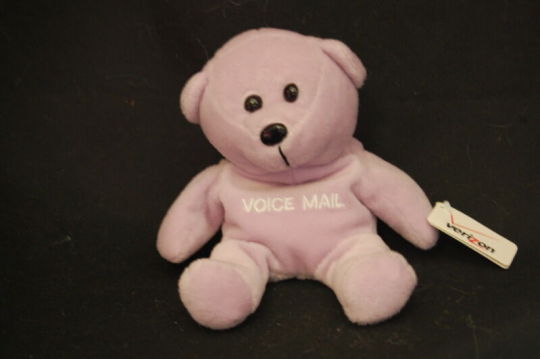
(source)
#toycore#kidcore#plush#bear#teddy bear#verizon#voice mail#under 20#this is my son Voice Mail#paid link
4K notes
·
View notes
Note
All I got is a couple of dollars and uh a piece of gum would that be good for a small erisol doodle

crawls out of the hectic week woodwork to accept the toonie and gum. here have them both being stupid <3
#tmos opens mail#Anonymous#tmos has art#eridan ampora#sollux captor#erisol#guy who is canadian voice. i love loonies and toonies yayy. anyways lmao#finding it really funny in hindsight how sollux has. two positions for his head to be in twice in this comic <3#just goes to show that i drew the first part ages ago and drew the second part when i had spare time this week lol#sollux's hair is so fun to draw its neat seeing that i do have a more solid grip on drawing it from that angle these days#& tbh. first panel sollux reminds me so much of a surprised rain world scavenger <3 doom vibes beast coded doomed guy <33#anyways. points at eridan. look at him hes so insecure about his romantic wants#sollux could be cuddled up in his lap spending time together and he'd STILL say the same thing after kissing his cheek LOL
202 notes
·
View notes
Text

I was suppressing Nothing There the other day. w. why does it say this
#lobotomy corporation#lobcorp#nothing there#digital#doodle#x lobcorp#it actually does say “you have recieved a voice mail” as one of it's lines i'm not just making stuff up
348 notes
·
View notes
Text
i wish people had more fun with the canon adjacent concept that matt is inherently fucking SHIT at helping mello and mello’s just really chill about it
#yeah sure he gets annoyed with him and maybe that shows in his voice#but he’s never like ‘ MATT YOU FUCKING IDIOT YOU RUINED EVERYTHING ‘#nah instead he tells matt to come with to japan and matt whines about it in his damn ear 😭😭#death note#mello#mihael keehl#matt#matt jeevas#mail jeevas#mellodramattic#?
174 notes
·
View notes
Text
i have another pet tip, for all pets not just dogs: take them to the vet young and/or soon after you adopt them, BEFORE something is wrong with them. either book a basic wellness appt for checks (no shots or procedures) or just ask the vet if it's ok if you drop by with the pet either on leash or in a carrier and just get as far as the waiting room or outside the clinic if they're still doing COVID airlock protocols or busy. plan for this to take several hours. let the pet approach the vet office entrance and hear/see/smell the waiting room, windows into the room, the door, all the spots around the door, etc. engage positively with them if they're feeling interested, soothe them if they're nervous, and give high value treats if possible. maybe assign a super S tier treat JUST for the vet (bacon, shrimp, stinkiest cheese, whatever). feeding them can short circuit their anxiety loops (not all the time for every animal, but as a general guideline). even a single positive exposure to the vet office environment will help next time you bring them in. a treat jackpot for every time they act brave and explore further is a great technique
vet visits aren't just more pleasant when the pet is not freaking out, they're safer for the vet and safer for the pet, not just because animals injure themselves and humans when scared, but also because it's a lot harder to examine a panicky cat or aggressive dog. if your pet is sick and you bring it to the vet and the vet needs four techs just to restrain it to take a temperature, that vet is not going to be able to get a good observation of the symptoms. they won't be able to get a baseline blood pressure or heart rate. panic alone can kill small animals like rabbits and birds.
when you meet the nurse or tech or vet at an appointment, pass them some of the special treats and ask them to feed some to the animal if the animal is willing to take them and it doesn't interfere with the appointment. vets are usually able to spare a couple seconds to do this to make the visit easier and the next visit even easier. i did this for my dog and he thinks the vets are his best friends even though he's had multiple surgeries, vaccinations, exams where he was nervous or uncomfortable, etc.
not all animals can be acclimated to the vet but most can. in an emergency it can make a huge difference whether your pet is a behavior case when you bring them in to the office or not, which is not the vet's fault but a factor of animal behavior. you can plan for it and make it easier on yourself!
edit: buying a muzzle in your dog's size and getting him used to it is an even bigger bonus tip. vets will love you for this. even good dogs sometimes need a muzzle. pain and fear do weird things to animal behavior
#pro doom strats#bpog#dogs#blog#cats#animals#long post#i do this with other types of random encounters like the mailman or the neighbors too#i saw in a delighted voice: oh boy the mailman! we like the mailman! remember when he said you were handsome??#but sentence structure doesnt matter just say the trigger word a lot like mail#mailman#neighbor#ring the doorbell when theres no one there abd give a treat etc#the more often you interrupt the behavior chain that leads from stranger or home guarding anxiety to total door freakout#the less likely you are to eventually end up with a dog who has more entrenched Issues#anticipate and derail the trigger before it becomes a trigger
3K notes
·
View notes
Text
why is this so funny.. and dean coded
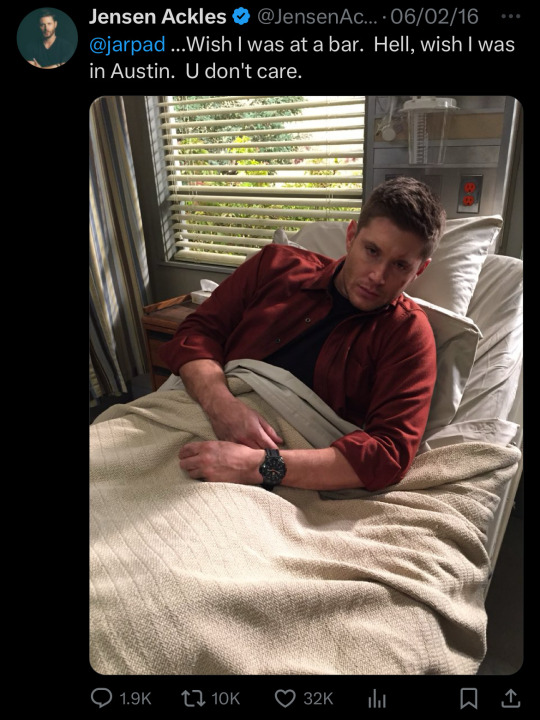
#spn#samdean#sam winchester#dean winchester#supernatural#dean everyday while sam was away at college#i can see him doing this like u know he left some drunken voice mails u Know he did
422 notes
·
View notes
Text














My pinterest algorithm is ruined thanks to these gay bitches
#(Voice of someone who is not mad)#Death note#Incorrect quotes#death note incorrect quotes#lawlight#Light yagami#yagami light#l lawliet#l#l dn#l death note#Misa amane#amane misa#yagamane#teru mikami#mikami teru#mikalight#mihael keehl#Mello#mello dn#Mello death note#mellodramattic#m2#matt#mail jeevas#matt dn#matt death note#nate river#near#near dn
58 notes
·
View notes
Note
you should know im always thinking about smunker saying "why does a grilchy's sandwich appear to be so yummy" or however it goes. its just good
THANK U its genuinely one of my fave things ive ever drawn

i wish i wasnt so voice dysphoric bc i read this in a very specific way (and i guess my voice is smunkers canon voice) that also adds to it 😭 i love dis drawing. His stupid little face.
#like i feel it wont hit the same if i get to go on t and my voice deepens ykwim like it has to be my current squeaky voice#but i hate my voice LOL#skunk mail#anonymous#its all the extra spacings on the original post that make it so good. appear to be so yummy? 🥪
73 notes
·
View notes
Note

Drops him at your feet ::3
Read left to right
...Hey does anyone know where Broken went? No? Ah, well. I'm sure he's in good hands.


Thankfully Smittens are very good hosts, the only downside to them is that you might get stuck in a hug.
((Thank you for the art of my sad squishy son! Sorry it took me a while to get around to your ask. As per tradition, below cut is a warm up doodle of your smitten

I do really like all of your designs so far and Smitten is no exception! I especially like the flat heart design on the end of his tail or how the scaling pattern on his arms has a heart. It's all the little things you know?
Oh also getting to do Smitten's dialog boxes as the little windows was so fun! I thought it'd be difficult but it wasn't too bad actually.
Thank you again for stopping by!
#return mail#stp voices#stp broken#stp smitten#voice designs my beloved#slay the princess#stp fanart#comic here#doobles#fanart#me having to draw wings bc other ppl's designs include them#and then almost forgetting them
54 notes
·
View notes
Text
I want to crochet an Impulse plushie and get my hands on one of those voice boxes and record the "hohmygawd 😩" voice line on it and put it inside so it activates when u press it and then mail it directly to Impulse. The plush will be holding a wing with hot sauce on it ofc
#it would be so funny but 1) i dont know how those voice boxes work and how yo get them and 2) mailing stuff internationally costs an arm#and a leg#bucket of random#impulsesv
293 notes
·
View notes
Text
Pac: This image gave me depression. This image here. This image here gave me–
Pac: ...Mitw at the very end? Hey, who made this caption? Who made this caption?! Nonononononono– Damn, Mitw, I had forgotten about that. Mitw out of nowhere at the very end. Guys, I didn't remember that! No, I don't remember that. No, I don't remember that in the caption. Damn guys, it's so fast at the end.

#Pactw#Pac#Tazercraft#Poor Pac can never escape#I'll be honest the worst thing about this is the blue-eyed Pac#Every time I'm forced to see blue eyed Pac I expect an apology in cash#Pactw I'm waiting for the check in the mail /j#Jokes aside I actually hate seeing Pac with blue eyes so much#Cool animation aside from that though pftt#Pac's watching old Tazercraft videos now / old Hide and Seek videos. I forgot how high-pitched Cellbit's voice was back then#Thanks for checking my translations Kia this is kicking my butt
78 notes
·
View notes
Text





Some of the pics from Sarajevo trip
#sarajevo#it is a wonderful city#not pictured me figuring out me and Gavrilo Princip have the same shoe size#and like 10 austrians ignoring his bridge lol#and many more cats snow bridges etc etc#+my roommate and i drunk voice mailing everyone in my phone when we got wifi in tito's caffee
51 notes
·
View notes
Text
official english dub voice actors for matt (drew nelson) & mello (david r. moore) are back to fuck some shit up! audio drama, playing out the reunion scenes from chapter 4 & 5 of Crush. read along!
full episode: https://youtu.be/o0bjdE27_0U
sound mixing: @jeevasphere
#death note#mello#mattmello#matt#etorphine#crush#fanfic#mellodramattic#mello x matt#matt x mello#writing#drew nelson#david hurwitz#voice actors#audio drama#mail jeevas#mihael keehl
300 notes
·
View notes